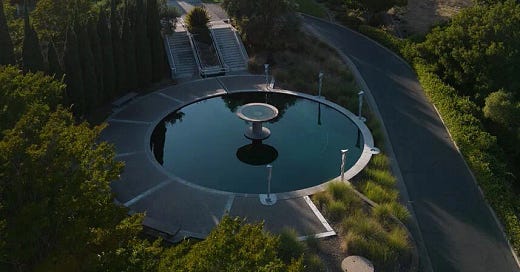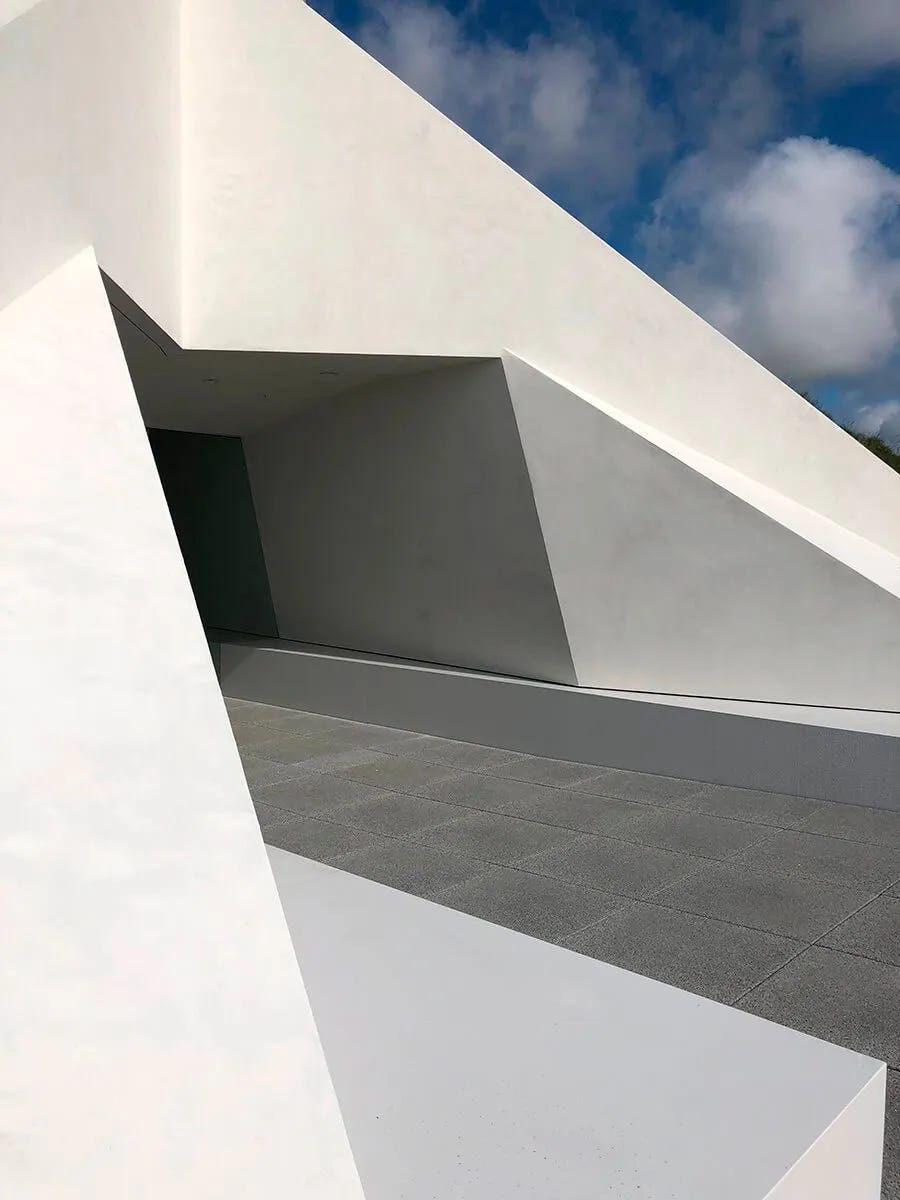I’ve been wanting to start a “review” series of vineyards and wineries I’ve had the pleasure of visiting over the years, and when I found myself reminiscing about past trips to the Sonoma and Napa Valleys this weekend, I figured I would take it as a sign to kick the series off.
This week, I look forward to telling you about one of my favourite Californian estates ⤵️
Artesa Vineyards & Winery
A 33-year-old vineyard with a 460-year-old legacy
Artesa was established in Carneros AVA (an appellation that bridges between Sonoma and Napa counties) in 1991 by Spain’s oldest winemaking family, Raventós Codorníu.
A dynasty of sparkling wine, the family launched their Californian endeavour (at the time, “Codorníu Napa”) with a mission to become the premier sparkling winemaker in California. It was in 1998, when the winery began to be recognized for its still wine production, that the name “Artesa” was born.
The vineyards
Artesa’s 150 acres of vineyards can be found just north of San Pablo Bay, which offers a slightly cooler climate with marine breezes that is prime for cultivating Pinot Noir and Chardonnay. To account for the vast terrain that the vineyards span, they are divided into more than 50 individual “blocks,” each with tailored cultivation practices.
💡 Pinot Noir and Chardonnay are two key varieties for producing sparkling wine.
Artesa also grows Cabernet Sauvignon and - in a nod to the vineyard’s Spanish roots - cultivate two varieties that grow in very few regions outside of Spain: Tempranillo and Albariño (which also benefits from the cooler, marine breezes of San Pablo Bay).
👉🏼 Artesa’s Albariño crops are grown in the property’s cooler regions to retain the variety’s acidity and crisp, bright flavours. You will enjoy aromas that include green apple, Meyer lemon, and kiwi.
The architecture
The Artesa Estate was designed by Barcelona architect Domingo Triay as an homage to the Raventós Codorníu family’s passion for nature and environmental stewardship, art, and craftsmanship and was built as a “seamless integration” into the winery’s natural surroundings. I have visited this Estate more than once and am awed each time by how seamlessly the juxtaposed sharp white lines of the building blend into the soft and luscious greens and blues of its surrounding landscape. The property is somehow grandiose and understated at the same time and I would recommend a trip to tour the property whether I enjoyed the wine or not!
Inside the winery you will find nods to its Spanish roots through the use of colourful tile, wood, textiles, and paintings.
What to try
Now for the good stuff: which of Artesa’s wines should you try? I’ve personally never sampled a wine here that I haven’t like, but I’ve included some notes below on a few of my favourites:
Cabernet Sauvignon
Artesa’s 2019 Cabernet Sauvignon is a delicious blend of 96% Cabernet Sauvignon and a hint of Petit Verdot with rich, layered aromas of blackberry, blueberry, dried fig, and white pepper. On the palate you will find a harmonious balance of black cherry, dark chocolate, plum, and vanilla. The appellation where many of these small, intensely flavoured grapes are grown benefits from rapid cooling during twilight, thanks to a rolling blanket of evening fog. This cooling effect preserves the grape’s vibrant flavours from becoming overly “cooked” while boosting the fruit’s natural acidity.
The winemaking processes involves an extended maceration period to extract maximum colour, flavour, and tannin from the grape skins before pressing. The fermented wines are aged in 30% new French oak for 22 months to achieve a velvety texture and long, elegant finish.
Tempranillo
Artesa’s Tempranillo serves as a rich expression of its Spanish heritage. The winery’s 2018 Tempranillo marries the traditional varietal character of old-world Rioja with California’s distinctive new world style. Intense aromas of blueberry and plum extend to the palate where they are complemented by dark cherry and blackberry.
Approximately 20% of the grapes used to produce this Tempranillo were whole cluster fermented to enhance the wine’s aromatic elements and add complexity and depth. The remaining berries were fermented de-stemmed, but not crushed, to allow for seamless blending of flavours.
The fermented wines are aged in 40% new French oak for 22 months where they acquire subtle oak notes that enhance the grape’s natural characteristics and build a rich, luscious texture with a lingering finish.
Selection 92, Estate Chardonnay
Artesa’s 2019 Selection 92 Estate Chardonnay is a beautifully elegant expression of its Californian landscape. Having been produced from the Estate’s highest elevation fruits where vines yield small bunches of highly concentrated grapes, delicate notes of Meyer lemon, jasmine, and honeysuckle are perfectly balanced with the fruit’s natural, crisp acidity.
The Estate’s winemaker, Ana Diogo-Draper ferments 30% of the grapes in inert vessels, while the remaining 70% are placed in French oak to add subtle complexity and a velvety texture. Approximately half of the individual lots undergo malolactic fermentation to enhance the wine’s depth, richness, and mouthfeel. Aged for nine months on the lees, it develops welcoming aromas of butter and pie crust. On the palate, look for flavours of crisp green apple, pear, and vanilla bean.
Los Carneros Pinot Noir
Artesa’s Los Carneros Pinot Noir offers elegant and bright aromas of plum, cranberry, strawberry, and a hint of rose petal. On the palate, luscious raspberry, blueberry, and red cherry are supported by a subtle spice that adds depth and complexity.
Versatile and food-friendly, this Pinot Noir boasts structured acidity, vibrancy, and a lasting finish while offering a genuine expression of the land from which it was produced.
The grapes are de-stemmed but not crushed before being placed in open-top stainless steel tanks. Due to the gentle nature of a Pinot Noir grape, the winemaker performs three punchdowns per day during fermentation, a method used to gently extract flavour and colour from the grape’s skins. The 2019 Pinot Noir was aged in 15% new French Oak barrels for 10 months on lees prior to bottling.
The result is an enticing, earthy, spicy, and woodsy aroma accompanied by layered complexity and savoury character. Notes of bay leaves, sour cherries, beef broth, and cooked cherries interplay seamlessly to fill out the wine’s moderate tannins and full body.
The last word
Whether you find yourself drawn to the bold complexity of a Cabernet Sauvignon, an elegantly refined Chardonnay, or a traditional-esque Spanish Tempranillo, I can guarantee there is a wine for you at Artesa.
I’ve enjoyed every experience I’ve had at Artesa Estate and encourage you to place it high up on your list if you find yourself touring this prominent California wine country!






